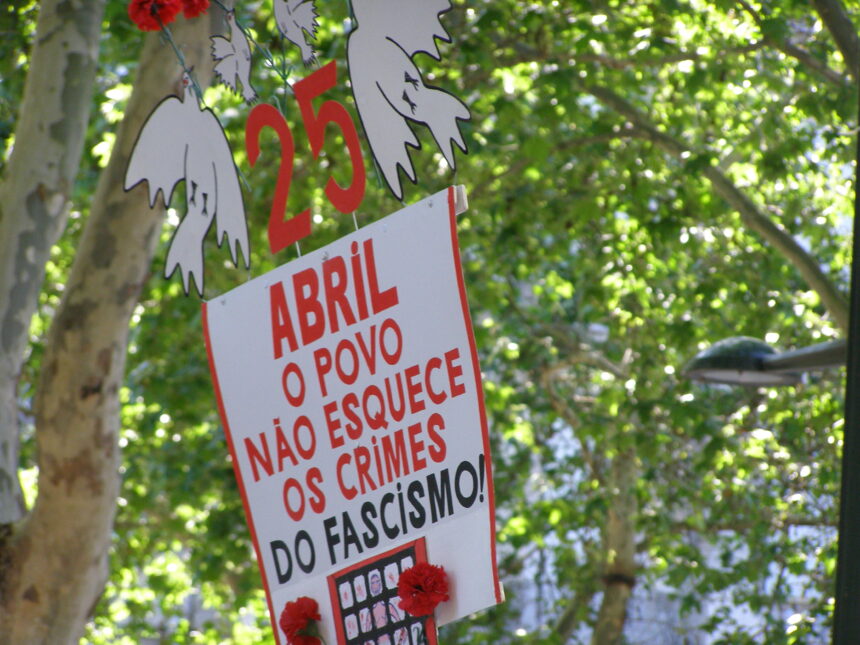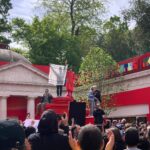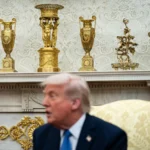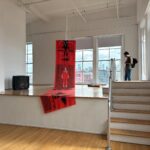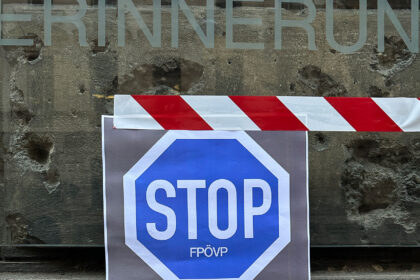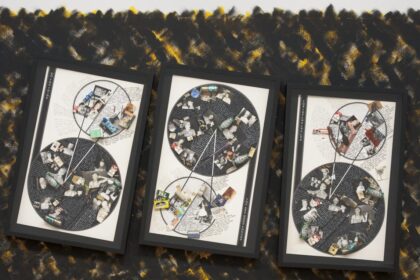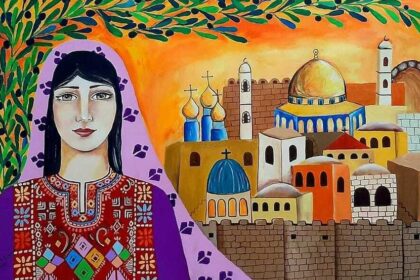From Marginality to Power: The Rise of Far-Right Politics in Portugal and the Potential for a Common Struggle Between Artists and Broader Society
Cristina Pratas Cruzeiro and Raquel Ermida
Fifty years ago, in 1974, Portugal overthrew a fascist-leaning dictatorship through the April 25 Revolution, founded on democratic and progressive principles. Since that time, far-right movements and political organizations have existed in the country. However, the Revolution fostered a broad social consensus around democratic values, rooted in a rejection of authoritarianism, which kept these groups relegated to social and political marginality until 2019 (Fig. 1). 2019 marked a turning point when, for the first time, a deputy from a conservative, populist, and xenophobic party was elected to the Portuguese Parliament. This election signaled the institutionalization of far-right ideology in Portugal, aligning the country with a trend that had been gaining momentum across much of Europe for years.
By 2024, the far-right party achieved a startling breakthrough, electing 50 deputies and becoming the third-largest political force in Parliament. This electoral success has significantly reconfigured parliamentary dynamics, pushing right-wing parties toward more extreme positions, for example, on abortion laws (legalized in Portugal in 2007), immigration controls, and social welfare[1]. While such policy objectives have periodically resurfaced when the so-called moderated right-wing parties held power, they were historically unsuccessful due to insufficient parliamentary representation. The strengthening of the far-right has now tipped the balance, increasing the likelihood of alliances and policy regressions.
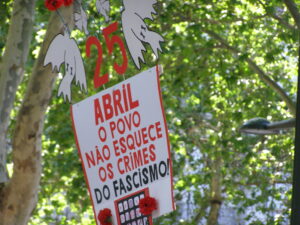
This shift has also legitimized far-right ideologies in broader society. The normalization of extremist rhetoric emboldened neo-Nazi and identitarian groups, which, after years of dormancy, resumed activities such as street demonstrations and propaganda initiatives, though their connections to the far-right party remain ambiguous. According to the 2023 Annual Internal Security Report, this reactivation reflects a radicalization of public discourse, characterized by rising intolerance, verbal and physical extremism, and the proliferation of radical online content[2]. Notably, this phenomenon has targeted both urban and rural areas. In rural regions, far-right rhetoric resonates with citizens disillusioned by decades of political neglect and inadequate policies for regional development. Among younger demographics, social media—particularly TikTok and Instagram—has been instrumental in disseminating far-right ideologies. These platforms amplify narratives centered on anti-immigrant sentiment, cultural nationalism, and hostility toward minority communities such as the Romani[3]. Additionally, messages often call for combating corruption and boycotting the political system, presenting these actions as necessary for national renewal and societal stability (Fig. 2).
Culturally, this has been reflected in actions by these groups, which have disrupted cultural events such as book launches and concerts, and issued threats against municipal authorities, asserting that they will closely monitor artistic and cultural programming. Nevertheless, such incidents remain sporadic and have not broadly affected artistic and cultural practices or significantly curtailed artistic freedom.
However, the persistent underfunding of the cultural sector and lack of labor rights, regardless of the governing party’s ideological orientation, remains a pressing issue since the 1974 revolution. Why is this the case? In 1976, within the revolutionary spirit, Portugal adopted a new Constitution, deeply rooted in humanistic and progressive principles, enshrining culture and the arts as fundamental rights and as privileged arenas for democratic engagement.
Yet, the constitutional promise remains unfulfilled. This is largely due to the dominance of capitalist economic systems and neoliberal ideologies, which have created a tension between constitutional principles and implemented policies. In practice, public policies have prioritized a commodified vision of culture and the arts, accompanied by state divestment and abdication of responsibility in these areas.
Even before the rise of the far-right, the cultural and artistic sectors faced precarious conditions, chronic underfunding, and limited public access—issues starkly at odds with the progressive goals of a democratic society. Portugal is the fourth-lowest EU country in terms of public investment in cultural services, highlighting the structural challenges faced by the sector[4]. These adverse conditions have been a driving force behind social mobilization among artists and cultural workers.
As a result, collective organization has emerged as a survival strategy for artists, often relying on shared economies to sustain creative practices. Politically, the arts sector has periodically witnessed waves of mobilization, especially during periods of heightened precarity, such as the COVID-19 pandemic. During this time, approximately 19 self-organized movements emerged, advocating for formal employment contracts, social protection measures for cultural workers, and other reforms[5].
Nonetheless, a disconnect persists between artists’ struggles for better working conditions and broader forms of political activism, such as social movements, unions, and political organizations. Although artists actively participate as citizens in efforts to resist regressive social and economic policies — and, more recently, in countering the radicalization of political discourse — there is a lack of collective awareness regarding the political strength they could achieve through more coordinated participation as a class in these movements. Max Haiven explains that “capitalism turns the artist themselves (regardless of the content they produce — indeed, the more provocative, the better) into a figure of their own propaganda.”[6] Capitalism benefits from perpetuating the idea that artists are not workers, thereby isolating them from broader labor movements.
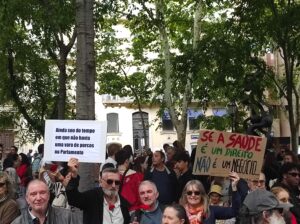
For example, the existence of unions representing cultural workers is scarce in most European countries. In Portugal, there is only CENA-STE[7], a union composed of artistic and technical-artistic workers. Firmly rooted in leftist ideology, this union has played a key role in various labor struggles within the sector, carving out a significant space for political advocacy. When the COVID-19 pandemic impacted cultural workers across the country, it became one of the most essential organizations for effective coordination. The involvement of unionized workers in this organization — as seen with Casa da Música in Porto[8] – was crucial not only for exposing the precarious working conditions but also for effectively addressing some of their demands. Even so, as mentioned earlier, much of the mobilization among artists and technicians splintered into smaller groups that lacked the influence needed for meaningful political engagement with authorities. This lack of coalition between the groups resulted in a minimal political impact.
Specifically, regarding fascism, it is crucial to recognize that far right and fascist ideologies are intrinsic to the capitalist system and neoliberal ideology. Historically, particularly during the first half of the 20th century, we saw alliances between artist groups and political movements across Europe, especially in the fight against fascism. In Portugal, the neo-realist movement stands out for its history of resistance to the dictatorship. Most of its members were part of opposition movements and organizations against the fascist regime, particularly the MUD, MUD Juvenil[9], and the Portuguese Communist Party (PCP). These organizations, including the PCP, were civic movements operating underground and were outlawed by the dictatorship. The MUD and MUD Juvenil brought together intellectuals, artists, and professionals from different ideological backgrounds who united to resist the dictatorship through cultural practices. These movements held regular meetings, with two particularly significant gatherings in 1947—one in the city of Almada and the other in Olhão.
The first gathering included “a wide recreational program featuring sports competitions, songs, poetry recitations, theater, music, dancing, and more.”[10] Not much is known about this event, but one memorable moment saw hundreds of people joining hands to form three concentric circles. This initiative by MUD Juvenil preceded the Youth Gathering at Bela Mandil, in Olhão. In a woodland area provided by the landowner for the event, thousands of young people[11] came together to discuss ways to fight for peace and democracy in a festive atmosphere. The gathering, which featured the reading of a manifesto, speeches, a communal lunch, dancing, and music, was suddenly disrupted by repressive forces from multiple police units. The crowd was escorted to the Olhão train station, not without some participants being beaten and identified by the police. A few days later, the political police (PIDE[12]) carried out a wave of arrests targeting activists from MUD Juvenil. Among those arrested were some participants from the Bela Mandil gathering.
As in Almada, one of the defining visual elements of this event was the circle, with its associated performative act being the roda (circle dance). During lunch, participants sat on the grass, forming a large circumference.[13] Later, they danced “in three concentric circles, holding hands.”[14]. The circle formed by the roda—an unbroken shape with no beginning or end, visually tied to movement and dynamism—embodied the poetics of unity and resistance in the fight against the Portuguese fascist dictatorship. Culture, fraternity, fellowship, and gathering were not only essential tools of resistance at MUD Juvenil’s events but also values that the movement prominently highlighted in its communications and bulletins. The political significance of these tools and values was well understood by the dictatorship, which sought to suppress both their expression and the activities of MUD and MUD Juvenil by any means possible.
Similarly, several artists joined the Portuguese Communist Party (PCP), taking on roles that involved artistic work, such as creating pamphlets, illustrations, forging documents, and other tasks. One of the most emblematic examples was the visual artist José Dias Coelho (1923–1961), who, after going underground in 1955, became a party leader. One of his primary responsibilities was setting up an office for document forgery, which he managed alongside Margarida Tengarrinha (1928 – 2023), also a visual artist[15]. In 1961, Dias Coelho was assassinated by PIDE, but Tengarrinha continued her militancy both within and outside the party, mobilizing intellectuals and artists in the fight against the dictatorship.
The activism of artists involved in civic movements and political parties played a vital role in opposing fascism and the Portuguese dictatorship[16]. Their experience in political activism was essential to the politicization of these movements, broadening their scope beyond the boundaries of the art world and its commodified domain.
In conclusion, the struggle of artists and cultural workers should draw inspiration from past examples, emphasizing the transformative power of unity and focusing on resisting and dismantling the capitalist system. The unity of workers, regardless of their specific professions, symbolizes the broader union of the majority against the system, including the fascist ideology it upholds. As David Harvey aptly put it, the success of such efforts “depends upon the degree of which the mass of the population rises up and says, ‘Enough is enough, let’s change this system.’”[17] This effort must align with other social and political movements committed to the same objective.
Cristina Pratas Cruzeiro is an Assistant Researcher at the Instituto de História da Arte from Universidade NOVA de Lisboa (IHA-NOVA FCSH), where she co-coordinates the Performance Art & Performativity in Arts cluster. She holds a PhD (2014) in Art Sciences from Faculdade de Belas Artes, Universidade de Lisboa (FBAUL) funded by Fundação para a Ciência e a Tecnologia (FCT). Between 2017 and 2022, she conducted a Post-Doctoral project titled “Collaboration and Collision: Public Intervention and Politics of Art” (IHA-NOVA FCSH), also funded by FCT. From 2008 to 2018, she served as a guest Professor at the FBAUL. Her research explores the intersection of artistic practices and society from multiple perspectives, with a particular focus on their relationship with politics. She has several national and international publications on the subject and recently published the book Atitude 74: Pichagem e pintura mural na revolução de Abril. (Página a Página, 2024). For further information: https://www.cienciavitae.pt//en/3E10-6B81-6614
Raquel Ermida is a PhD candidate in Artistic Studies at the NOVA FCSH (Lisbon), funded by the FCT. She holds a master’s degree in visual arts – Critical, Curatorial, and Cybermedia Studies from Geneva’s HEAD. In 2020, she was a Fulbright scholar at Pratt Institute, New York. In 2022, she participated in a project on artistic collectivization during the Covid-19 pandemic in Portugal. Ermida has published in Journal of Visual Art Practice and Arte, Individuo y Sociedad and co-edited a 2023 special issue of the Revista de História da Arte on artistic collaboration. For further information: https://www.cienciavitae.pt/portal/C71C-F21B-6A95
Notes
[1]In 2024, alongside the election of 50 far-right deputies, the center-right Social Democratic Party (PSD) won the legislative elections in coalition with the conservative Catholic party, CDS. Although the coalition did not secure a majority, shortly after the elections, some coalition members suggested repealing the abortion law through a new referendum. This proposal faced fierce opposition from left-wing parties, leading the new Prime Minister to assure that it would not be pursued. However, it is worth noting that the last time this coalition was in power (2011–2015), several measures were introduced to restrict access to abortion, including the imposition of fees for voluntary pregnancy termination (IVG). Currently, in immigration policy, the national government has aligned with the far-right party to pass laws restricting immigrant entry, ending free healthcare for non-residents, and conducting police actions targeting immigrants—measures framed by the Prime Minister as efforts to “reassure citizens.” (cf. here). In the Portuguese islands of the Azores, a coalition specifically between the far-right party, PSD, and CDS has resulted in significant cuts to social benefits for disadvantaged populations living on the islands.
[2] The report can be read here: https://www.portugal.gov.pt/pt/gc24/comunicacao/documento?i=relatorio-anual-de-seguranca-interna-2023. See particularly p. 26. Last access: January 13, 2025
[3] The Romani people have been present in the country since the 15th century and currently make up approximately 5% of the Portuguese population. Historically, this community has faced marginalization not only from society but also from political authorities. They suffer from extreme poverty, with 96% of the community living below the poverty line, and often face discrimination when applying for jobs. Since the far-right entered parliament, stereotypes about their alleged reliance on public subsides and other prejudices have been amplified, further complicating their lives. More info here: https://www.publico.pt/2022/10/25/sociedade/noticia/pobreza-afecta-96-portugueses-ciganos-2025192. Last access: January 21, 2025.
[4] Please check the graphics here: https://ec.europa.eu/eurostat/statistics-explained/index.php?title=Government_expenditure_on_cultural,_broadcasting_and_publishing_services. Last access: January 13, 2025.
[5]For further insights on this topic, see our article, “Artistic Practices in Lockdown: Resistance and Collectivism during the Covid-19 Pandemic in Portugal,” published in Revista Arte, Individuo y Sociedad on April 8, 2024. The full text is available at: https://dx.doi.org/10.5209/aris.95446.
[6] Haiven, M. (2020) “No Artist Left Alive”, In Faux Culture, pp.39-40.
[7] Sindicato dos Trabalhadores de Espectáculos, do Audiovisual e dos Músicos (Union of Performing Arts, Audiovisual, and Music Workers). Founded on May 15, 2017, the union “aims to address labor issues, citizenship, professional recognition, and social rights of artistic, technical-artistic, and mediation workers in the fields of audiovisual, cinema, circus, dance, music, and theater, whose activities involve the creation, performance, preparation, production, and dissemination of shows or other performative events and/or audiovisual and multimedia content.” http://www.cena-ste.org/quemsomos/nota_historica.html
[8] For more details on the case, refer to the article cited in footnote 5.
[9] The MUD – Movimento de Unidade Democrática (Movement for Democratic Unity) – was a political organization founded in 1945 to oppose the Portuguese dictatorship. Its members were primarily intellectuals and liberal professionals. The youth branch of this movement was known as MUD Juvenil. A key part of the country’s resistance to fascism was the organization of the General Exhibitions of Visual Arts by the Subcommittee of Visual Artists of the MUD Committee of Journalists, Writers, and Artists. These exhibitions, held at the National Society of Fine Arts between 1946 and 1956, brought together many artists working across a wide range of media, united not by a shared aesthetic approach but by the political commitment of the exhibitions. For this reason, the government imposed prior censorship starting in 1948, requiring all works and participating artists to pass government scrutiny. In the 1947 edition, the political police seized 12 works by 11 artists, including Júlio Pomar, Rui Pimentel (aka Arco), Maria Keil, Manuel Ribeiro de Pavia, Avelino Cunhal, Manuel Filipe, and Lima de Freitas. In many cases, the political police’s actions were driven not by the content or style of the works but by the political activism of the artists themselves.
[10] Communiqué from the Lisbon District Committee of MUD Juvenil, issued in January 1947.
[11] According to the Supplement to Bulletin No. 3 from the Faro District Committee of MUD Juvenil, there were “more than a thousand young people.”
[12] PIDE – Polícia Internacional de Defesa do Estado [International State Defense Police]
[13] Supplement to Bulletin No. 3 from the Faro District Committee of MUD Juvenil.
[14] Idem.
[15]These documents were used to conceal the true identity of the militants.
[16] Cruzeiro, C. P. (2024) Atitude 74: Pichagem e pintura mural na revolução de Abril. Portugal: Página a Página.
[17] Harvey, D. (2010) The Enigma of Capital and the Crises of Capitalism. Oxford University Press, Inc., p.12.

